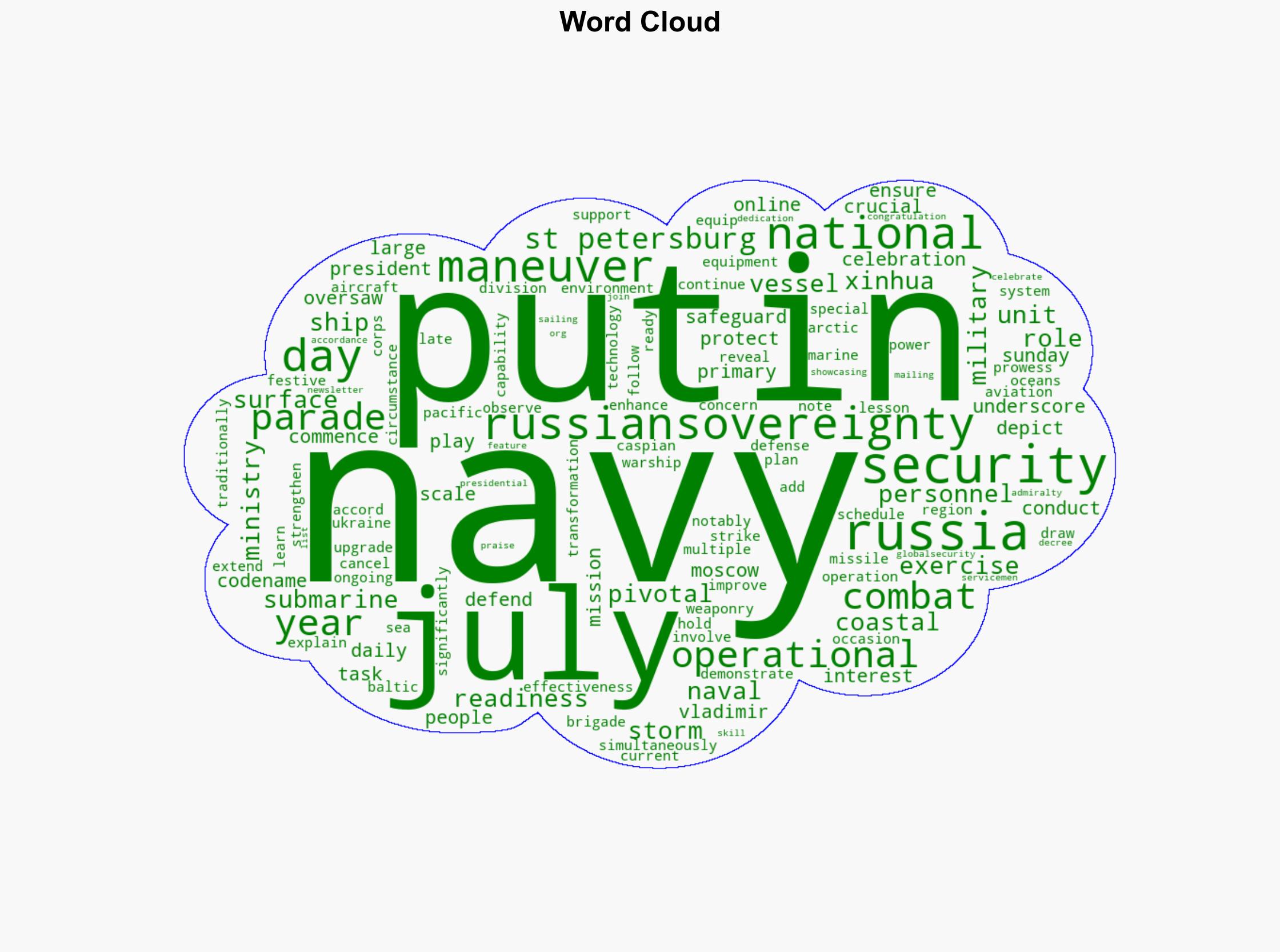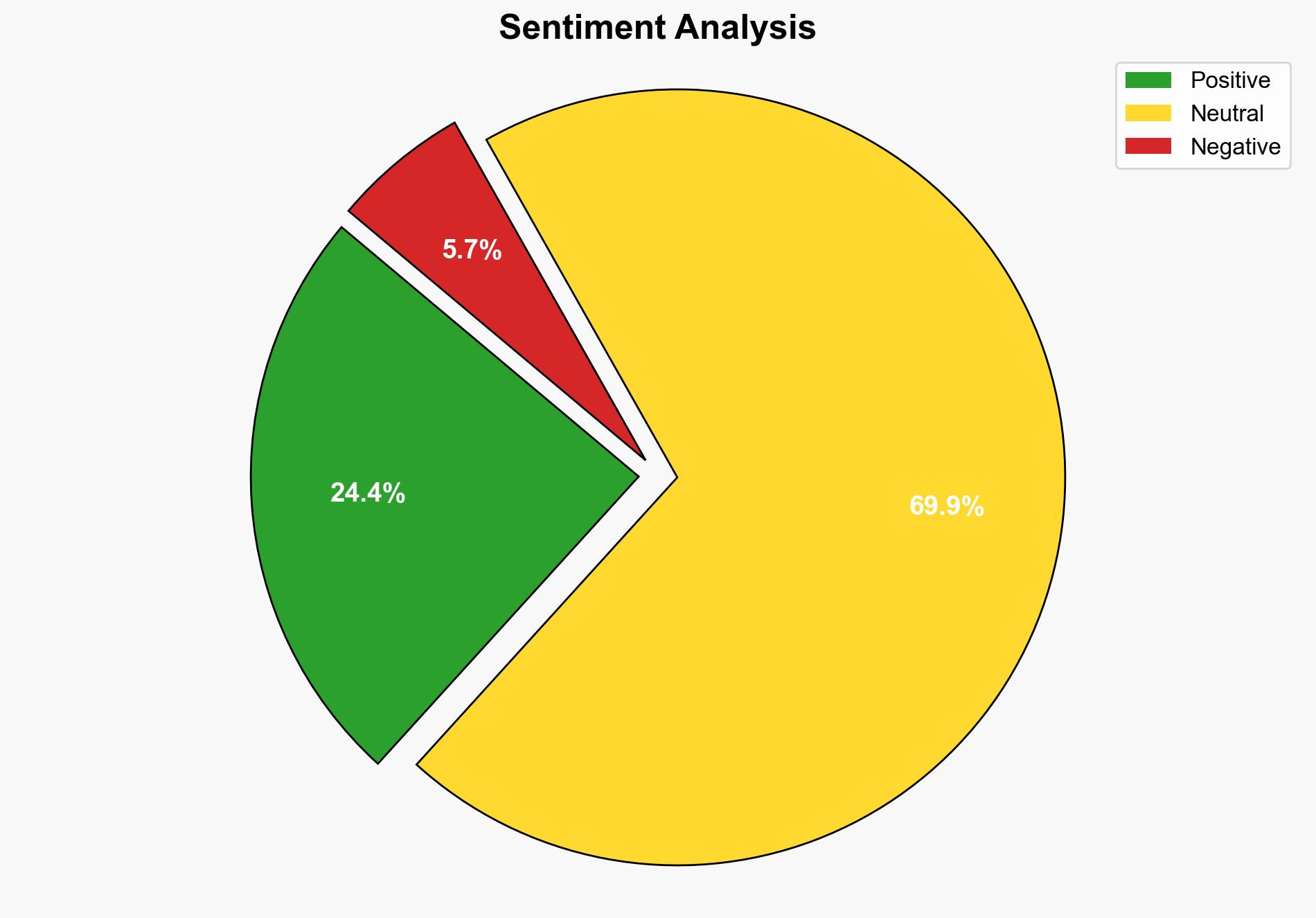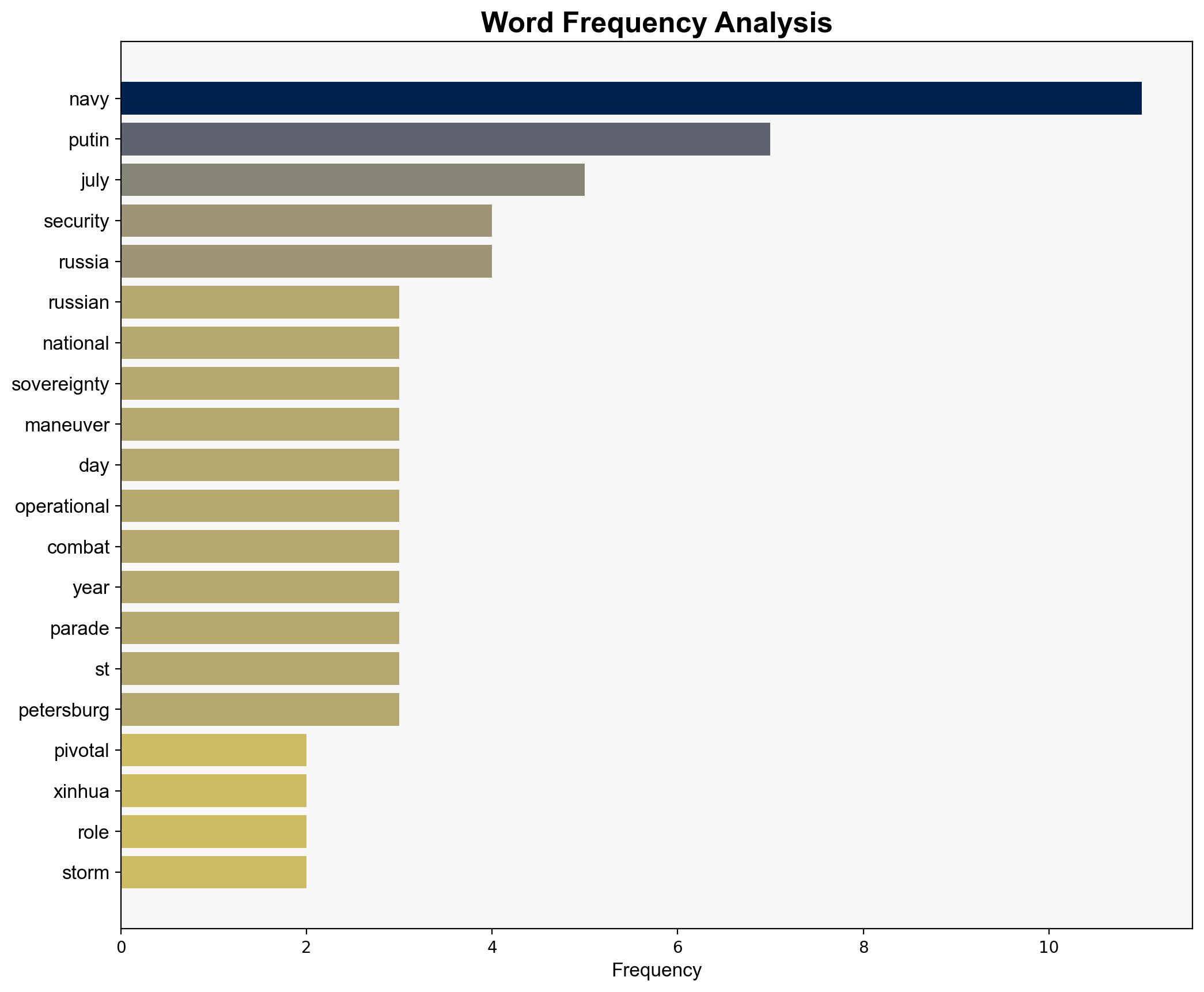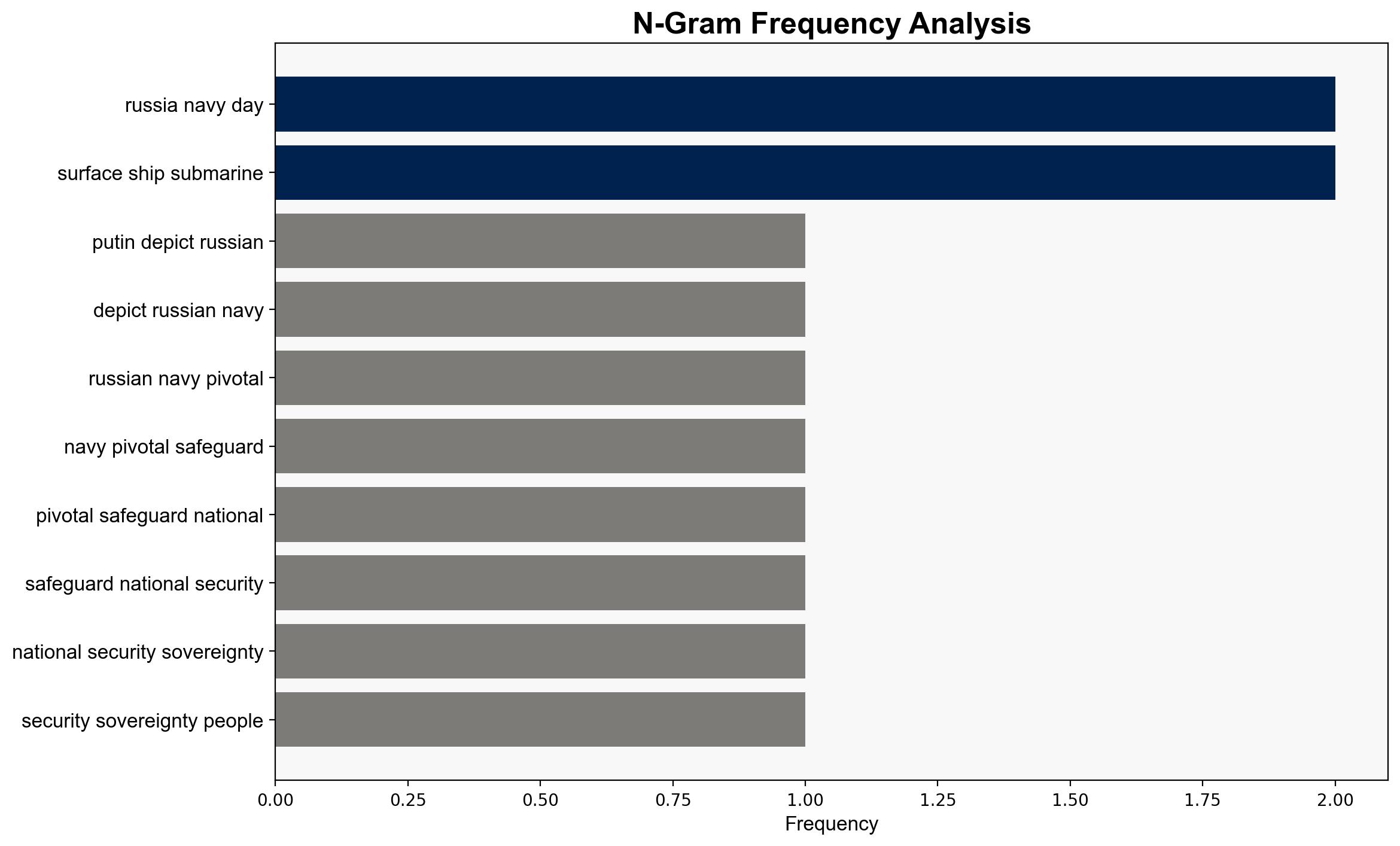Putin depicts Russian navy as pivotal in safeguarding national security sovereignty – Globalsecurity.org
Published on: 2025-07-29
Intelligence Report: Putin depicts Russian navy as pivotal in safeguarding national security sovereignty – Globalsecurity.org
1. BLUF (Bottom Line Up Front)
The strategic judgment is that the Russian navy’s enhanced role is primarily a response to perceived threats and a demonstration of military strength. The most supported hypothesis is that these maneuvers are intended to project power and deter adversaries, particularly in light of ongoing tensions in Ukraine. Confidence level is moderate due to limited direct evidence of intent beyond public statements. Recommended action is to monitor naval developments closely and assess potential shifts in regional maritime security dynamics.
2. Competing Hypotheses
1. **Hypothesis A**: The Russian navy’s increased activity is primarily a strategic deterrence measure aimed at projecting power and countering NATO influence, particularly in the Arctic and Baltic regions.
2. **Hypothesis B**: The maneuvers are primarily intended for domestic consumption, to bolster national pride and support for the government amidst economic and military challenges.
Using ACH 2.0, Hypothesis A is better supported by the scale and scope of the exercises, the involvement of advanced technology, and the geopolitical context of NATO’s activities. Hypothesis B is less supported due to the international focus of the maneuvers and the cancellation of public events like the naval parade, which would typically serve domestic propaganda purposes.
3. Key Assumptions and Red Flags
– **Assumptions**: It is assumed that Russia perceives NATO as a significant threat and that military demonstrations are an effective deterrent. Another assumption is that the Russian public supports military expansion despite economic constraints.
– **Red Flags**: The cancellation of the naval parade suggests potential internal challenges or resource constraints. The emphasis on new technology and weaponry may indicate gaps in current capabilities.
4. Implications and Strategic Risks
The maneuvers could escalate regional tensions, particularly in the Arctic and Baltic regions, where NATO and Russia have competing interests. There is a risk of miscalculation leading to unintended confrontations. Economically, the focus on military spending could strain Russia’s budget, impacting other areas of governance. Cyber and psychological operations may accompany these maneuvers to influence both domestic and international perceptions.
5. Recommendations and Outlook
- Enhance intelligence gathering on Russian naval capabilities and deployments to anticipate potential threats.
- Engage in diplomatic efforts to de-escalate tensions in key maritime regions.
- Scenario Projections:
- Best: Russia scales back military activities following diplomatic engagements.
- Worst: Increased naval confrontations lead to broader regional conflicts.
- Most Likely: Continued demonstrations of naval power with intermittent diplomatic tensions.
6. Key Individuals and Entities
– Vladimir Putin
– Russian Ministry of Defense
7. Thematic Tags
national security threats, cybersecurity, counter-terrorism, regional focus




